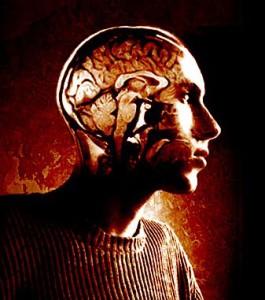Seifert and Sutton, Educational Psychology
From the authors , “All in all, we hope that you find Educational Psychology a useful and accessible part of your education. If you are preparing to be a teacher, good luck with your studies and your future! If you are an instructor, good luck with helping your students learn about this subject!”
Purchase print copy $49.95 (365 pages, 12 chapters, see table of contents below)
Download Free PDF (color, 4 Mb, 365 pages).
Original Source: Global Text Project
The joys of teaching
Are there also challenges to teaching?
Teaching is different from in the past
How educational psychology can help
Teachers’ perspectives on learning
Major theories and models of learning
Why development matters.
Physical development during the school years
Cognitive development: the theory of Jean Piaget
Social development: relationships,personal motives, and morality
Moral development: forming a sense of rights and responsibilities
Understanding “the typical student” versus understanding students.
Individual styles of learning and thinking.
Multiple intelligences.
Gifted and talented students
Gender differences in the classroom
Differences in cultural expectations and styles
Oppositional cultural identity.
Accommodating cultural diversity in practice.
Look at these three people from the past. All were assigned marginal status in society because of beliefs about disabilities:.
Growing support for people with disabilities: legislation and its effects
Responsibilities of teachers for students with disabilities.
Categories of disabilities—and their ambiguities
Learning disabilities.
Attention deficit hyperactivity disorder.
Intellectual disabilities.
Behavioral disorders.
Physical disabilities and sensory impairments
The value of including students with special needs
Motives as behavior
Motives as goals.
Motives as interests.
Motives related to attributions
Motivation as self-efficacy.
Motivation as self-determination
Expectancy x value: effects on students’ motivation
TARGET: a model for integrating ideas about motivation.
Why classroom management matters
Preventing management problems by focusing students on learning.
Responding to student misbehavior.
Keeping management issues in perspective.
Communication in classrooms vs communication elsewhere.
Effective verbal communication.
Effective nonverbal communication.
Structures of participation: effects on communication
Communication styles in the classroom.
Using classroom talk to stimulate students’ thinking
The bottom line: messages sent, messages reconstructed
Forms of thinking associated with classroom learning
Critical thinking
Creative thinking
Problem-solving
Broad instructional strategies that stimulate complex thinking
Teacher-directed instruction
Student-centered models of learning.
Inquiry learning
Cooperative learning.
Examples of cooperative and collaborative learning
Instructional strategies: an abundance of choices.
Selecting general learning goals.
Formulating learning objectives
Differentiated instruction and response to intervention.
Students as a source of instructional goals.
Enhancing student learning through a variety of resources.
Creating bridges among curriculum goals and students’ prior experiences.
Planning for instruction as well as for learning.
Basic concepts.
Assessment for learning: an overview of the process
Selecting appropriate assessment techniques I: high quality assessments
Reliability
Absence of bias
Selecting appropriate assessment techniques II: types of teacher-made assessmentsSelected response items
Constructed response items
Portfolios.
Assessment that enhances motivation and student confidence
Teachers’ purposes and beliefs
Choosing assessments
Providing feedback
Self and peer assessment
Adjusting instruction based on assessment.
Communication with parents and guardians.
Action research: studying yourself and your students.
Grading and reporting
Basic concepts.
High-stakes testing by states
International testing.
International comparisons
Understanding test results.
Issues with standardized tests
Appendix A: Preparing for licensure.
Appendix B: Deciding for yourself about the research
Appendix C: The reflective practitioner.
Resources for professional development and learning
Reading and understanding professional articles
Action research: hearing from teachers about improving practice.
The challenges of action research.
Benefiting from all kinds of research
Post navigation
Fearlessly Copy, Print, Remix ™ "Barriers to education, whether intentional or not, by policy or price, decays humanity."

